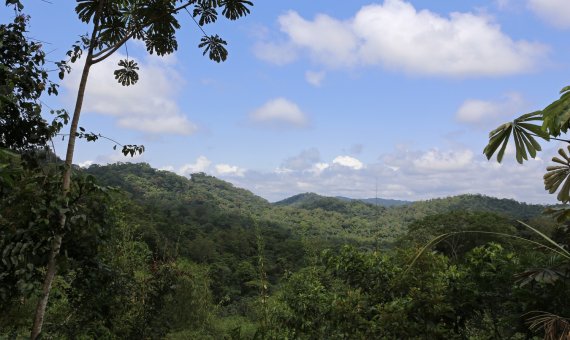In 2085, Gabon will be much wetter than it is now, and savannahs will become forested. © André van Proosdij
To help them understand the distribution of species, biologists make use of distribution models which track the relations between the known habitats of a species and various climate and soil variables. Using such models you can predict how a species will react to something like climate change. But it only works if you put correct data into the model, says Van Proosdij. And that is problematic because little or no data is available for many tropical plant and animal species. ‘Of the estimated 7500 plant species found in Gabon, only 5300 are documented. And more than 2500 of those species have only been seen five times or fewer. How can you make a reliable model with so few sightings?
And yet modelling is in full swing. ‘That is what surprised me most on my PhD trip. Distribution models are used a lot but without establishing a lower limit to the number of sightings needed for a reliable model.’ Van Proosdij therefore developed a method for determining that lower limit, which proved to depend on the specific area being studied and the rarity of the species. Fewer sightings are required for rare species than for common species.
Van Proosdij then applied the method to Gabon, a biodiversity hotspot in Central Africa. To this end he calculated the current and future distribution of each of the thousands of species for different climate scenarios. He used this data to identify botanical diversity patterns, the first in Africa to be based on distribution models of thousands of plant species.
The result is worrying. Climate change will drastically affect the biodiversity of Gabon – and the rest of Africa. The prognosis for 2085 is that the mix of plant species found in some places in Gabon will have changed by 75 percent as a result of some plants disappearing and others appearing. What is more, the total species richness will have gone down by 5 to 10 percent. ‘But that is a cautious estimate. I expect the percentage of species that die out to be much bigger. But I cannot calculate that for want of sufficient data.’
The main reason climate change will have such a big impact is that Gabon will become wetter, says Van Proosdij. ‘In 2085, large areas of Gabon will be 25 percent wetter. Rainfall will increase in the dry season in particular. So the country will become greener and dry savannahs will become forested. In a wetter climate, species which have adapted to those dry conditions get into trouble. And the already rare species will suffer the most.’


